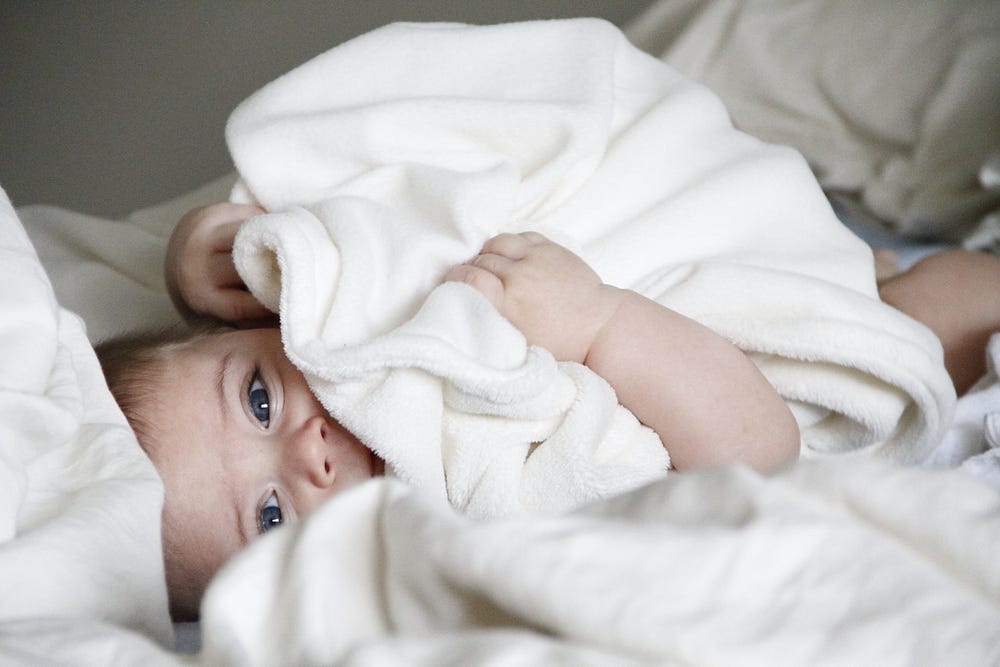Babies are beautiful and oh-so precious, but face it: they’re pretty damn gross, too. Almost anything an infant comes into contact with, including a parent, is bound to be covered in germs, spit-up, or worse. When it comes to keeping your baby’s sleep area clean, multiple trips to the laundry room or nearest laundry mat is probably necessary. So if you’re staring at a pile of bedding and asking yourself, “How often should I wash a crib sheet?” it’s best to just remind yourself that while the laundry never really ends, neither does your love for that beautiful, precious, gross little bundle of love and germs.

Researchers at The New Scientist found that babies are actually born dirty, so it’s honestly not their fault they’re not squeaky clean every hour of every day. Between spit up, milk, blowouts, and the normal skin cells and sweat that coat all our beds, a baby’s crib is far from clean, too. In a 2015 study researchers found that our beds are an ideal breeding ground for germs, housing between 4–16 different species of fungi at any one time.
WebMD, however, thinks our children may be too clean. In fact, the site goes on to say, “a mounting body of research suggests that exposing infants to germs may offer them greater protection from illnesses, such as allergies and asthma, later on in life.” The studies found that by avoiding microbes and germs, children are not given the opportunity to bolster their immune system and, as a result, can fall victim to allergies as they age.
The American Academy of Pediatrics (AAP) recommends that baby’s crib should be devoid of most soft bedding that adults use — like blankets, pillows, and anything other than a tight-fitting sheet — in order to avoid the risk of suffocation and overheating, which can increase the risk of Sudden Infant Death Syndrome (SIDS). The AAP site states:
“Avoid use of soft bedding, including crib bumpers, blankets, pillows and soft toys. The crib should be bare.”
These recommendations cut down on the laundry pile for at least the first year of your baby’s life, and especially since most babies wear pajamas, are swaddled, or wear sleep sacks when sleeping and until they’re old enough to roll themselves over. So while babies are pretty gross, their crib sheet may not get as dirty as you might think.
Good Housekeeping says we should all be washing our bedding bi-weekly and unless someone has been unwell or there is an obvious stain. “Bed sheets should be washed at least every other week,” the site suggests, which is a good rule of thumb to follow when washing your baby’s crib sheet. The Spruce, however, recommends that parents and caregivers change bedding every week, even if it seems clean. In the end, and unless your little one had an accident or there are obvious spills and stains, a wash every week or two will probably do the trick.
All this to say that you probably don’t need to worry too much if it’s been a little while since you laundered your baby’s crib sheet, but try to get in the habit of washing them on a somewhat weekly basis.
article from: romper.com
Comments
Post a Comment